Before we started long distance sailing, we thought long and hard about what kind of sail plan would work best in the trade winds. We have been very pleased with the changes we made. In this article, we will talk in detail about some of the decisions we made, and how our choices have worked out for us and our boat.
Flora was originally equipped with: a mainsail, a jib, a genoa (135%), and a furling gennaker. For her new wardrobe, we decided against a special trade wind sail (like a Blue Water Runner or a Parasailor) and opted instead for a modified Code Zero. The modifications we discussed with the sailmaker were regarding the sail’s primary intended use as a removable downwind sail, and only secondarily as a light wind upwind sail. The changes he incorporated mean that the clew is cut a little higher and a heavy spinnaker cloth (MPEX 300, 130 gr/sqm) was used instead of a laminate.
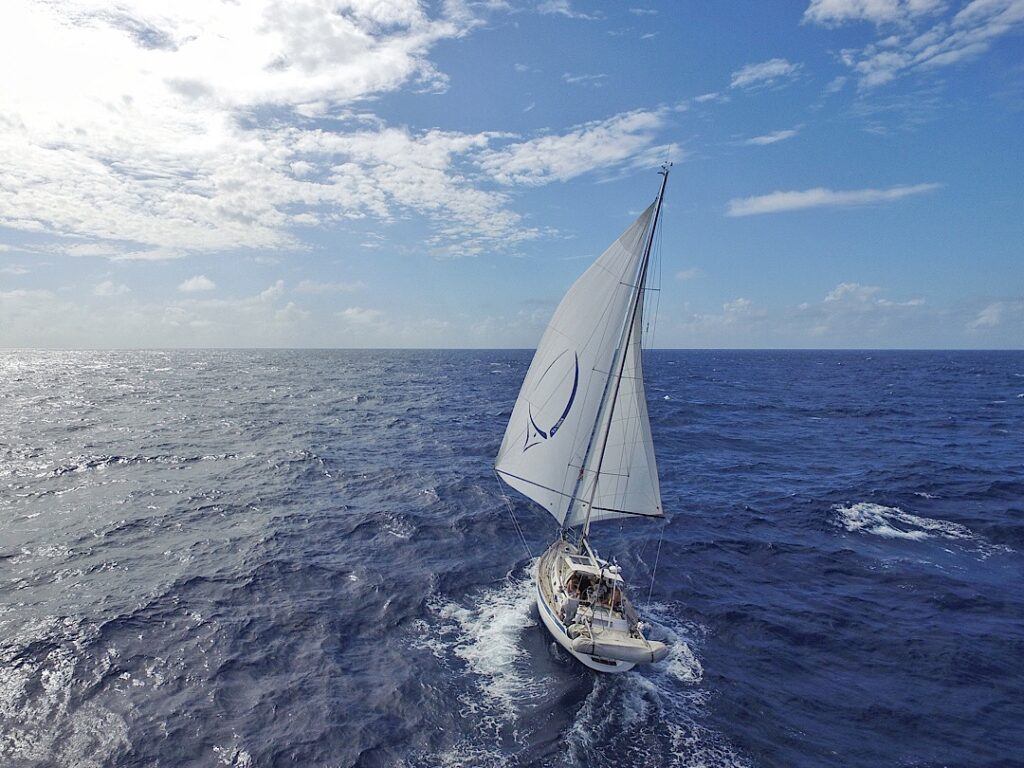
The Code Zero is mounted with an endless furling line and has an anti-torsion cable in the luff. Aft of the cockpit, the furling line runs through a double block with cam cleats. When attached to the rail in its long storage bag, the Code Zero can be quickly raised or stowed away.
We were satisfied with the sail even before reaching the trade winds. It proved to be a real all-rounder: a “weak wind turbo” in the Mediterraneam’s lighter winds, that can be rolled away easily by hand even in a strong blow.
In Tenerife we made a small modification and had Velcro strips retrofitted along the clew to prevent unintentional unfurling.

How did the sail fare in the trade winds of an Atlantic crossing?
First of all, because the trade winds were blowing quite strongly during our crossing (mid-December 2019), we used the Code Zero far less than we initally expected, and sailed “wing on wing” most of the time.
In the first week, after leaving Mindelo on Cape Verde, we almost constantly had wind speeds of six to seven Beaufort, with occasional gusts reaching force eight. Not the ideal time to use an 80 square meter sail! But, when the true wind fell below 20KN, the Code Zero was able to show off its strengths to the full; and changing the sails was so easy because we could leave it rolled up and attached to the bowsprit when not in use.

So what was our downwind setup?
We rigged both whisker poles permanently for the Atlantic passage. Each was secured with a topping lift, a foreguy to the foredeck cleat and afterguy to the center cleat. Since we only have one designated topping lift, the spare genoa halyard served as a topping lift for the portside spinnaker pole. We decided not to design the topping lifts as a bridle. The important thing is to lead them to the outer end of the whisker pole and not to a retaining bracket attached to the center of the pole, because otherwise considerable bending forces would act on the pole. The port spinnaker sheet is led through the spinnaker pole end to the clew of the Code Zero. Accordingly, the starboard spinnaker sheet runs through the spinnaker boom of the starboard spinnaker pole to the clew of the jib. The two poles share the same rail on the mast and are connected to each other with a Dyneema shackle. The carbon fiber pole is pulled up and attached to the mast when not in use, the aluminum telescopic pole is moved to a special guard-rail mount.
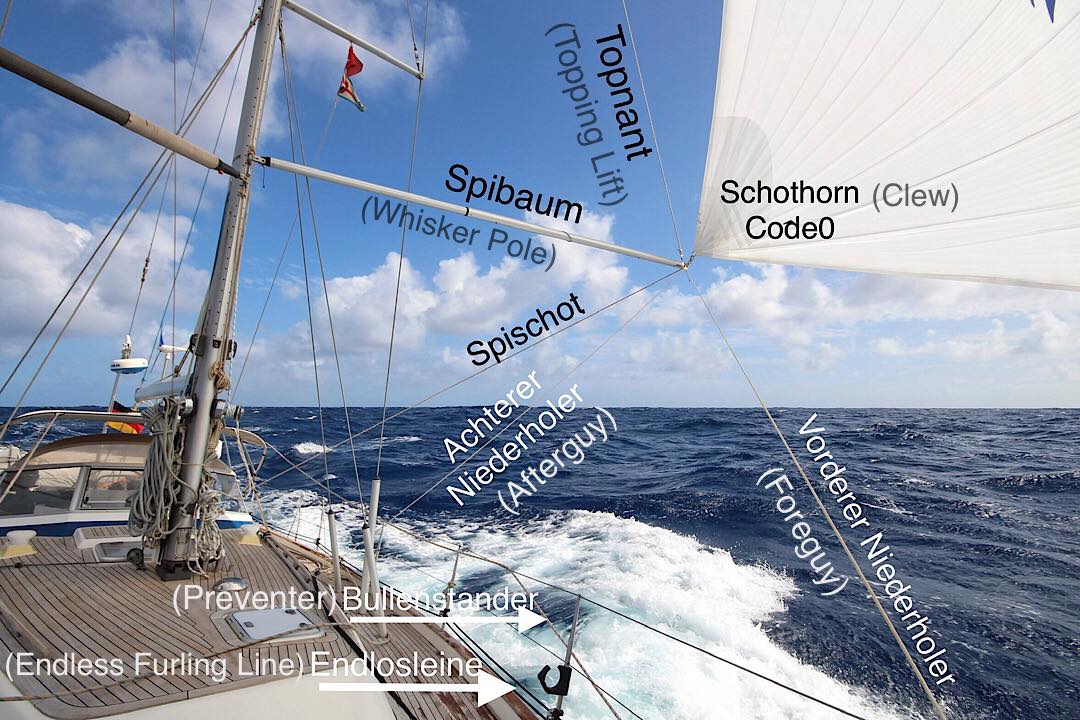
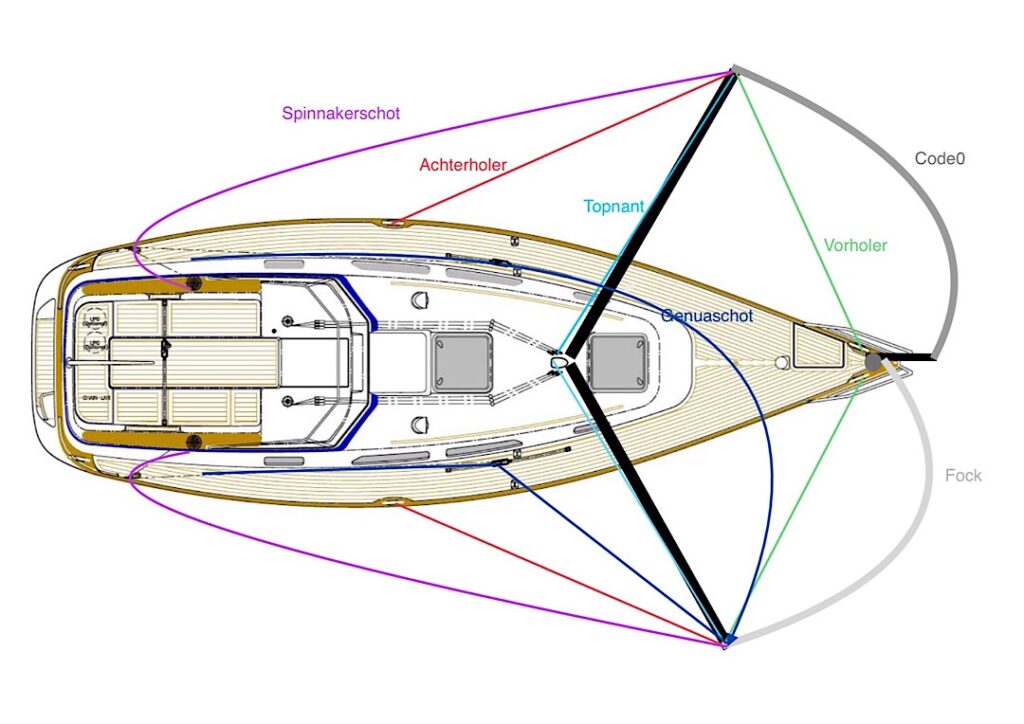



The normal jib sheets remain attached. This has several advantages: firstly, the spinnaker sheet can be checked very easily for chafe (especially around the spinnaker pole end) by tightening the normal sheet and loosening the spinnaker sheet. Secondly, if the jib needs to be steered higher than 120 degrees to the wind, it makes it possible to drive the jib “normally”. This was the case at the beginning of the passage in the turbulent conditions behind Santo Antão. With this simple configuration, the jib can even be turned and driven normally to port. In practice, the jib remained poled out to starboard for almost the entire passage, although we did need to reef it twice.
In winds over 20KN (TWS) we switch to using the mainsail (wing on wing, on the opposite side to the jib), and in higher winds we would reef the main as neccessary. The preventer for securing the main is permanently attached to the boom during the passage and led outside the guard-rail through the bow cleat and back to a primary winch, allowing it to be controlled entirely from the safety of our cockpit.
When the wind falls below 20KN, we roll out the Code Zero back out and furl the main away. The advantage of this lies not only in the larger sail area and drive of the Code Zero, but also in reduced rolling of the boat; which tranlsates to a lower steering workload (and power consumption) on our electric autopilot.
Are we happy with the setup?
Yes, very much so.
It may look a bit complicated with all the running rigging, but it is extremely easy to use and has many options to adapt to changing conditions. There is no need for gymnastics on the foredeck and everything can be safely controlled from the cockpit.

We are glad that we chose to use our jib instead of the 135% genoa. The genoa has a lower clew and would probably have had to be constantly reefed.
The difference in size between the jib and Code Zero when both sails are used as trade sails has not led to any major “imbalance” or a noticeable effect on the rudder position. The load point of both sails is kept forward and close to the bow, which reduces the tendency to roll. The Code Zero and always maintained enough pressure in the sail which helped a lot in countering the Atlantic swell during light winds.
Was an extra trade-wind sail necessary?
Clearly no, not even the Code Zero.
Even under wing on wing conditions, the boat drove wonderfully in both strong and normal trade winds. In the end it is always a question of which of the many possible compromises you want to make. Despite this, or perhaps because of it, we are very happy that we chose a Code Zero because we use it very often.
An unintentional “side effect” is that we have learned to really appreciate our jib, which had previously led a rather monastic life, rarely seeing any action at all. Before, when the wind picked up was always so much easier to leave the jib in its locker and sail with a reefed genoa. However, when used in strong winds, the jib simply stands up better and allows the boat to point higher. In our experience, the disadvantage of the jib in low winds is significantly compensated for by an easy-to-use Code Zero.

😁 By the way, the yellow-green spots on the water to starboard are sargassum.
This article was first published in German on www.syflora.blog. It has been translated and revised for inclusion in the Noforeignland Magazine in 2024.






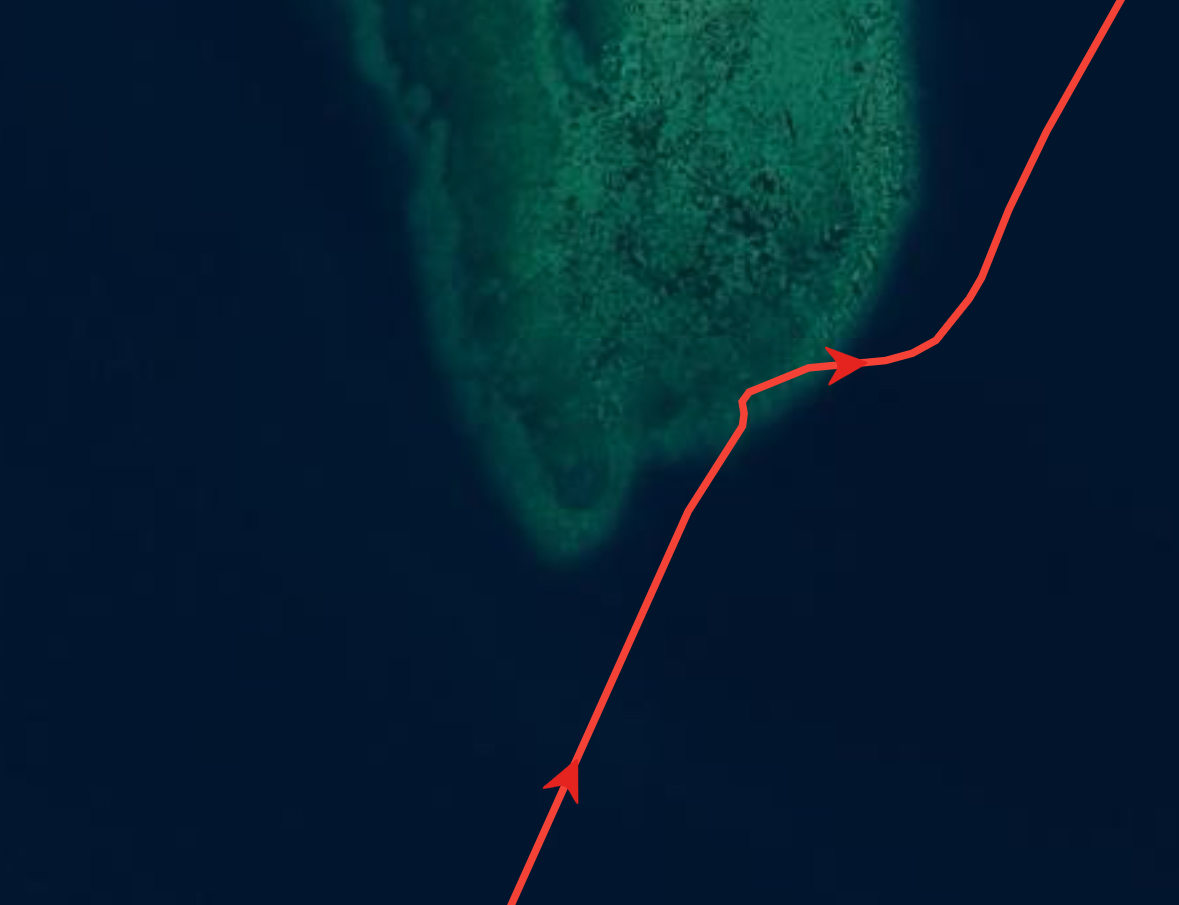

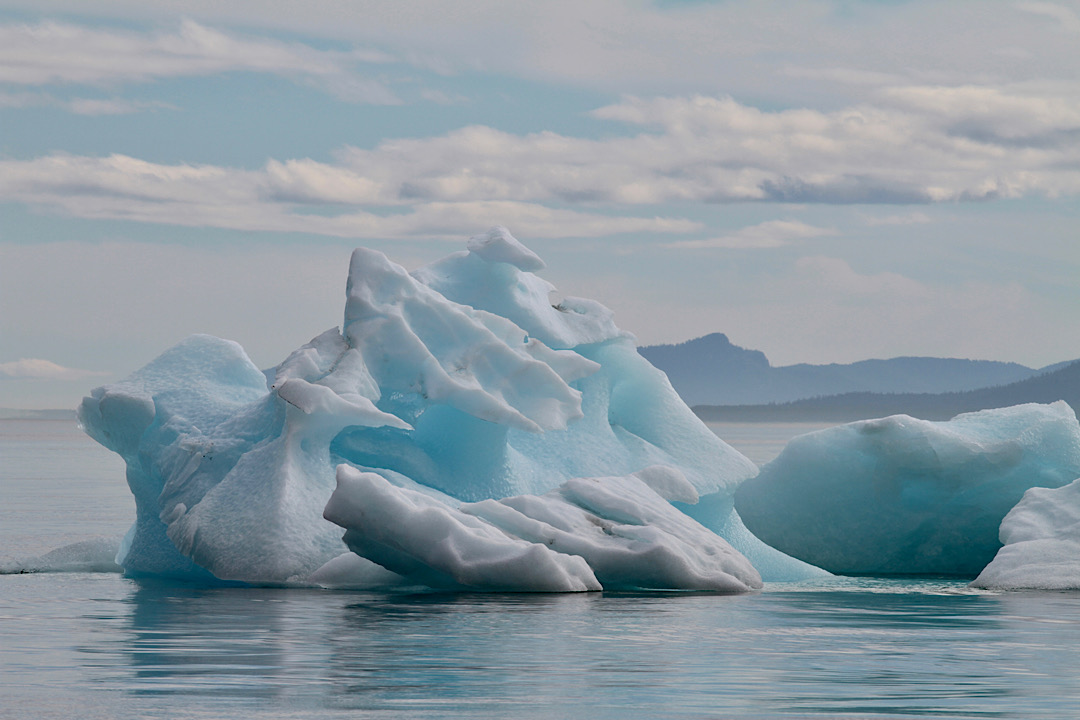
What a well written article! Thank you!
Great information Ralf. Regards to you and Wiebke!
Thank you for a great informative article. I was told you were going to write it and have been looking forward to it.
You would have had a more flexible setting by putting both your poles free from the mast and attached to an extra halyard and downhowler. This way you get less stress on the poles and less rolling of the boat. On our crossing, we used it two weeks non-stop.It can be used from 120 degrees to 180 degrees on both tacks and if your forestay has a double groove it can even be reefed as a rolling genua
. see : https://www.simetric.co.uk/twizzle_rig/index.htm
I went through your articles. The pics and videos of the setup of your cross tied poles grave me goosebumps. Happy if it works for you, but I don’t see any added flexibility, rather the opposite.
As you pointed out, you would use “two jibs sewn into a common luff tape and hoisted up the foil of a furling gear”. This common trade wind sail is a one purpose sail. It’s impossible to furl away one of the sails and use the other one. Also, the sail is useless on other than downwind courses.
As for the ability to reef (and furl away) from the cockpit: the fixed poles of the setup shown in the above article allow for the same and without any swinging poles on the foredeck. Also I can’t see that with your setup you’d be able to use the jib “normally” without unrigging your poles. This is possible with the setup described above. It is also kind of possible with a blue water runner or two identical jibs, but both these would require repositioning the sheet (and therefore work on the foredeck).
The flexibility comes from the fact that both poles are “free floating” which allow much lighter poles as well as having the sails angled to the wind so being able to a broader choice of angle to the wind and way less rolling. The same system could also work with a gib and a mizzen. or with other sails settings as two groove forestay. This “twizzle rig” settings was applied years ago with success by Warren Luhrs in long distance single handed races.
North Sails has this sail. Do not know how much it costs – looks the right thing .
https://www.northsails.com/products/tradewind-sail
Kirsten Neuschafer had one when she sailed into Hobart.
https://www.youtube.com/watch?v=pUNT2s8ff7c
hope this helps
Nice article. We use the same system as Ralf described and we love it. We use one addition, our mainsail with 3 reefs is sheeted at 45 degrees. This decreases the rolling considerably and it creates a windflow to the luff genoa.
In case of a squall you simply roll in the genoa’s as far as needed and you leave the reefed main since the surface is small. Reefing can be done from the cockpit which is convenient and safe at night.
Gybing is also easy because the main is heavily reefed.